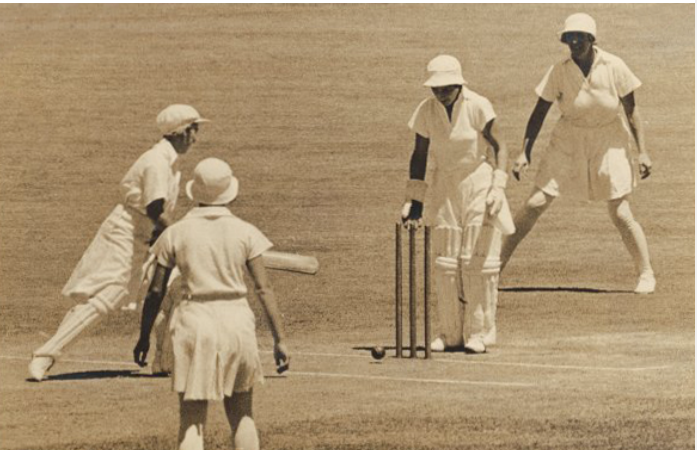From Lucknow to the World Stage: The Unstoppable Rise of Indian Women’s Cricket


Women’s cricket in India has reached a height it has never touched before, and it took a historic win against South Africa in the 2025 ICC Women’s Cricket World Cup final to make the nation stop, watch, and truly appreciate the women behind the blue jersey. Even those who never followed the sport are now standing up to applaud India’s women cricketers. But this newfound admiration is the result of decades of struggle, perseverance, and passion, a journey that began long before this World Cup victory.
The Early Days
While Indian men had already made their mark in international cricket as early as the 1930s, the women’s journey began much later. Women started playing cricket in India in the early 1970s, a time when the idea of women in sports was still met with scepticism.
It all began with one man’s vision. Mr Mahendra Kumar Sharma, an ardent cricket enthusiast, founded the Women’s Cricket Association of India (WCAI) in 1973. He registered the body under the Societies Act in Lucknow, with Begum Hamida Habibullah as the first president. This move marked the official birth of women’s cricket in India.
Before this, in 1969, Aloo Bamjee had founded The Albees, India’s first women’s cricket club in Mumbai. But it was Sharma’s institutional effort that gave the sport a national framework. That same year, the first state-level tournament was held with just three teams: Maharashtra, Uttar Pradesh, and Madhya Pradesh.
Lucknow quickly became the hub of women’s cricket in India. It was from here that the first generation of trailblazers emerged, names like Diana Edulji, Shanta Rangaswamy, and Anjum Chopra, who would go on to shape the identity of Indian women’s cricket.
Operating from Lucknow, the WCAI put together India’s first women’s cricket team, which toured the West Indies in 1976. Under the guidance of Mrs Chandra Tripathi and Mrs Pramilabai Chavan, the association worked relentlessly to develop the sport further.
The WCAI gained International Women’s Cricket Council (IWCC) membership in 1973 and earned government recognition in 1978. However, unlike countries such as England and New Zealand, where the women’s and men’s associations merged, India’s WCAI continued to function separately from the BCCI for many years.
In 1975, when Australia’s Under-25 team toured India, the hosts fielded three different captains, Ujwala Nikam, Sudha Shah, and Shreeroopa Bose, across three Test matches. At that time, it was common for players from New Zealand, England, and Australia to play in skirts, while Indian and West Indian cricketers wore trousers. The sight of women playing cricket drew massive curiosity, and large crowds would turn up sometimes in the tens of thousands, just to watch.
One of the most iconic moments in India’s women’s cricket history came in 1976, when India won its first-ever Test match against the West Indies in Patna, in front of 25,000 spectators. It was a moment that marked the arrival of Indian women’s cricket on the world stage.
The 1990s brought another wave of momentum. India won its first-ever ODI series against New Zealand, reigniting interest in women’s cricket after years of struggle. The team’s 1999 tour of England was another milestone, following the merger of England’s women’s board with the ECB.
Struggles Behind Everything
While the men’s team was celebrated, sponsored, and televised, the women were left to fight their own battles. Matches were rarely broadcast, and there was little to no financial support. Players often had to pay for their own travel and equipment.
Cricket legend Mithali Raj once revealed that after finishing as runners-up in the 2005 Women’s World Cup, each player received only ₹8,000, roughly ₹1,000 per match. In stark contrast, during the 1970s and 1980s, Indian male cricketers earned ₹2,500 per Test and ₹1,500 per ODI. Even after three decades, women were still earning less than half of what men had made decades earlier.
Recognition and Change
Despite the odds, the women’s team continued to push forward. Legends like Diana Edulji, Shanta Rangaswamy, and Sudha Shah became pioneers of the sport, breaking barriers for future generations. Their contributions were later recognised with Arjuna Awards, a long-overdue acknowledgement of their impact on Indian sports.
With time, the game began to change. Sponsorships improved, infrastructure strengthened, and the public’s interest grew, especially after the rise of players like Mithali Raj, Jhulan Goswami, Harmanpreet Kaur, and Smriti Mandhana. From earning ₹1,000 per match to players today commanding multi-crore contracts, women’s cricket in India has indeed come a long way.
The 2025 World Cup victory has become a turning point, a culmination of fifty years of effort, resilience, and faith. The women who once played in borrowed kits and self-funded tours have inspired a new generation to dream bigger.
The Mithali Raj Pavilion, the first-ever cricket stand named after a woman in India, stands as a reminder of how far women’s cricket has come. Yet, the journey isn’t over. Despite global recognition and success, women cricketers still face misogynistic trolls and unequal treatment, proof that the fight for true equal recognition in the sport continues.
From Lucknow in the 1970s to lifting the World Cup in 2025, Indian women’s cricket has travelled an extraordinary path. This victory is not just about a trophy; it is a tribute to every woman who dared to dream, played without applause, and paved the way for the champions of today.
This World Cup win is not the end, it’s the beginning of a new era.\
i1 SPORTS ENTERTAINMENT
Flat No. 8/9A, Sri Ramalay, S3, Dr. Subburayan Nagar, 8th Street, Kodambakkam, Chennai, Tamil Nadu 600024
Contact: +91 9176773335
Mail: Contact@i1sports.in
©2023. SOARXI ENTERPRISE PVT LTD
All Right Reserved